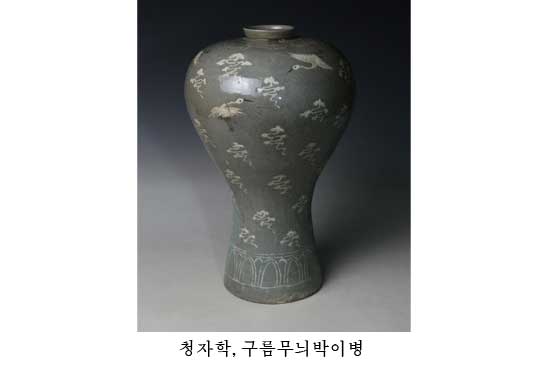Koryo porcelain, our national treasure
On March 27, Juche 50(1961), Chairman
The Chairman stated that Koryo ceramics attracted the world’s attention for its peculiar colour from olden times and it was bisaek (jade green) to represent its colour.
Mentioning that the word, bisaek, originally was derived from the colour of bluish-green jade, and it was as clear as the autumn sky of our country, giving a feeling of softness, he told that bisaek was also used in the meaning of bimilsaek (secret colour) which only the skilled potters could produce.
The Chairman continued that Koryo people had widely used sanggam, the pattern inlaying technique, by introducing the mother-of-pearl incrustation and the gold and silver thread inlaying to the pottery craftwork, and the inlaid Koryo ceramics were extremely beautiful and diverse in patterns including the beautiful scenes such as drooping twigs of weeping willow on the lakeside, wild ducks swimming in pairs, blooming clouds, fluttering cranes, flowers in full bloom and green pine trees and so on. He also said that when talking about Koryo ceramics, the world people mostly referred to the jade-green inlaid porcelain.
The Chairman also said that Koryo people had not schematized its shape and modelled on the beautiful shapes of animals and plants like watermelon or bottle gourd, so their shape was diversified and beautiful.
He concluded that Koryo ceramics were regarded as a treasure by the world people for their remarkable colors, patterns and shapes in all, and that they were the most outstanding production of those times in terms of formative arts and technologies.
Hearing the teachings of the Chairman, the students said in unison that they came to know why Koryo ceramics were so famous in the world, and were so impressed by his profound knowledge.
